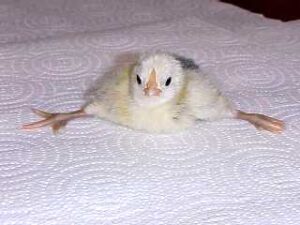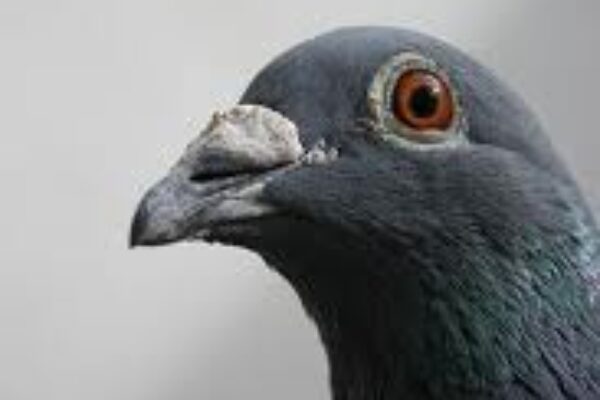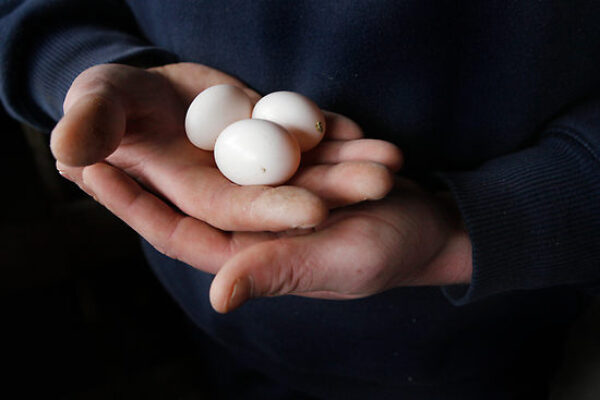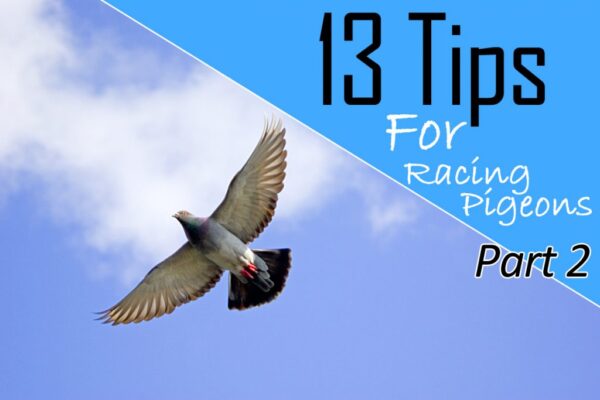
I am sure we have all experienced spraddle-legged youngsters in the nest. Here one or both legs splays outward producing a deformity in the leg or legs. The deformity is mainly in the ability to position the limb in a proper posture; but can also result in true deformed bones or joints of the involved leg(s).
The condition results from insufficient traction in the nest bowl. It happens most commonly when there is a single nestling. The second nestling usually provides something to push against for the other nestling, and the side of the nest bowl provides the same thing for the opposite leg.
The nesting material is the other factor in providing adequate traction to the growing squabs. The parents usually cover the squabs providing extra weight for them to bear, and if adequate traction is not present, the leg or legs tend to push away from the body producing this condition.
The involved leg can end up pointing 90 degrees or more away from what would be normal. I have even seen them where the rotation was so severe that they appeared to be pointing backwards. Of course the longer before they are noticed, and the worse the deviation, the harder it can be to correct the problem.
This can usually be corrected by the fancier. First, adequate nesting material to provide decent traction needs to be supplied. The legs then need to be “hobbled”, or bound together to approximate a near normal or slightly overcorrected posture.
One must be careful not to attach the binding material too tightly around the racing pigeons legs so as not to disturb circulation. A relatively soft material is better, so as not to cut into the leg tissue since there may be quite a bit of tension on the legs/material. I have used soft twine or tape to do this job, often using the band as a starting point, attaching to the band rather than the leg to distribute the pressure more evenly.
Next bind the other leg to pull them together without constricting the leg. It usually only takes several days to a week or so to accomplish the correction since the squabs are growing so fast at this time. Remove the binding when it seems to be time and see how the squabs leg posture appears.
One can always reapply it if it is not corrected adequately. Some may not be completely correctable depending on severity and timing on the corrective process. The success rate is high and certainly deserves trying.
See also Treating Pigeons with Spraddle Legs
Spraddle Legged Pigeons by Dr. David E. Marx DVM







Spraddle leg can be a problem…since I m in my loft everyday I am able to catch that problem fast…..one cause is the pair are setting too close to a single chick causing it to put its legs out to have room…..sometimes I remove the chick and put is into another nest that also has a single chick….that helps the bird …and you ve freed up a pair to rest and lay again……another cause I see is that the pair dosent have enough neating material in the bowl….causing the chick to sled around in the neat.as he cant keep his feet under him like he should…you can either add more material or you can cut s piece of course material and put it in the bottom of the nest…..this give the chick something to hang on to……spraddle leg happens early in the nest, so the sooner you see it you can help…..I ve tryed tying something around their legs ….but remember that the legs are starting to form in the way…..I think once they are bent…the bird is crippled and trying to bent it back is just adding to the problem…I know you say it is a good bird…but believe me a cripple homer isnt a good bird……I raised pigoens since I was 12 and Im 64 now so Ive seen this a lot……its easier to cull out the chick and raise another than it is to try to baby that one….good lick with your birds…Butch
Ive had the problem a while back . Single nesters now get a small potato which i change up in size as the squeaker grows, good luck , regards JR.
I have lost two pigeons which were very tame and used to follow me around to cooper hawks. bright objects may work near the loft; what works to protect the birds when flying morning and evening exercise.
arthur
Well there you go,I’ve learn’t something new.I’ve kept pigeons for about 15yrs and only ever had this happen once.I paired a brother and sister together as they were off my best stock and wanted to get right into the gene pool.Unfortunately only one chick hatched.I soon became aware of this condition because the chicks leg’s were sticking out each side from underneath it’s parent.I put the condition down to the mating being so close and thought it was some kind of genetic deformity.I split that pair up and immediately put the chick down.Pitty I didn’t have this infomation back then.
Excellent tip! thanks for sharing.
If the fancier has few breeding pairs. The best way to avoid these would be to regularly check the youngsters especially those single in the nest. It’s a shame if a youngster from a promising pair develops spraddle legs just because of being overlooked.
One simple tip is using bindings. Use a clip on plastic ring band on the other leg without the permanent band. That way the binding is not tied directly to the leg and the pressure is distributed evenly so avoiding more complications.